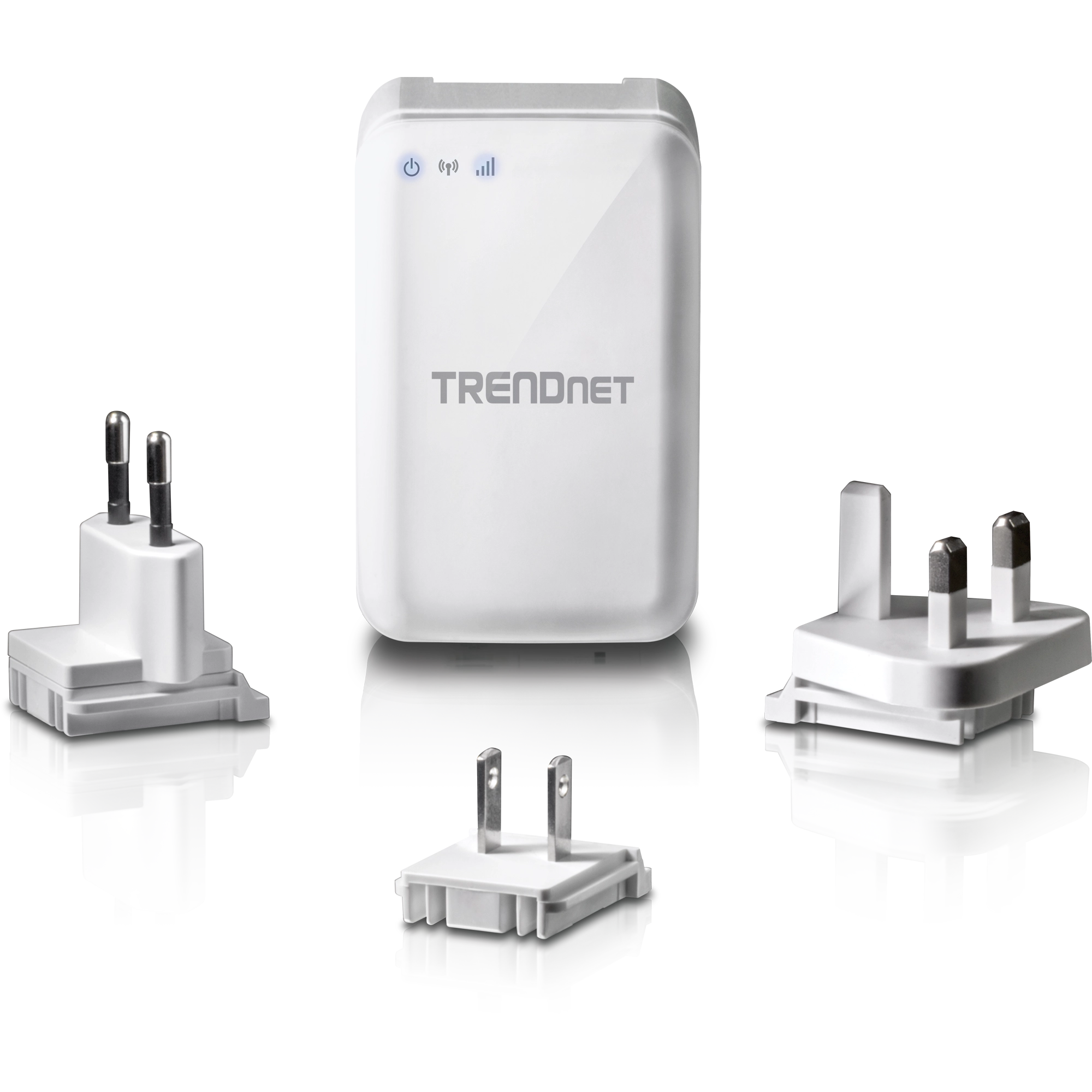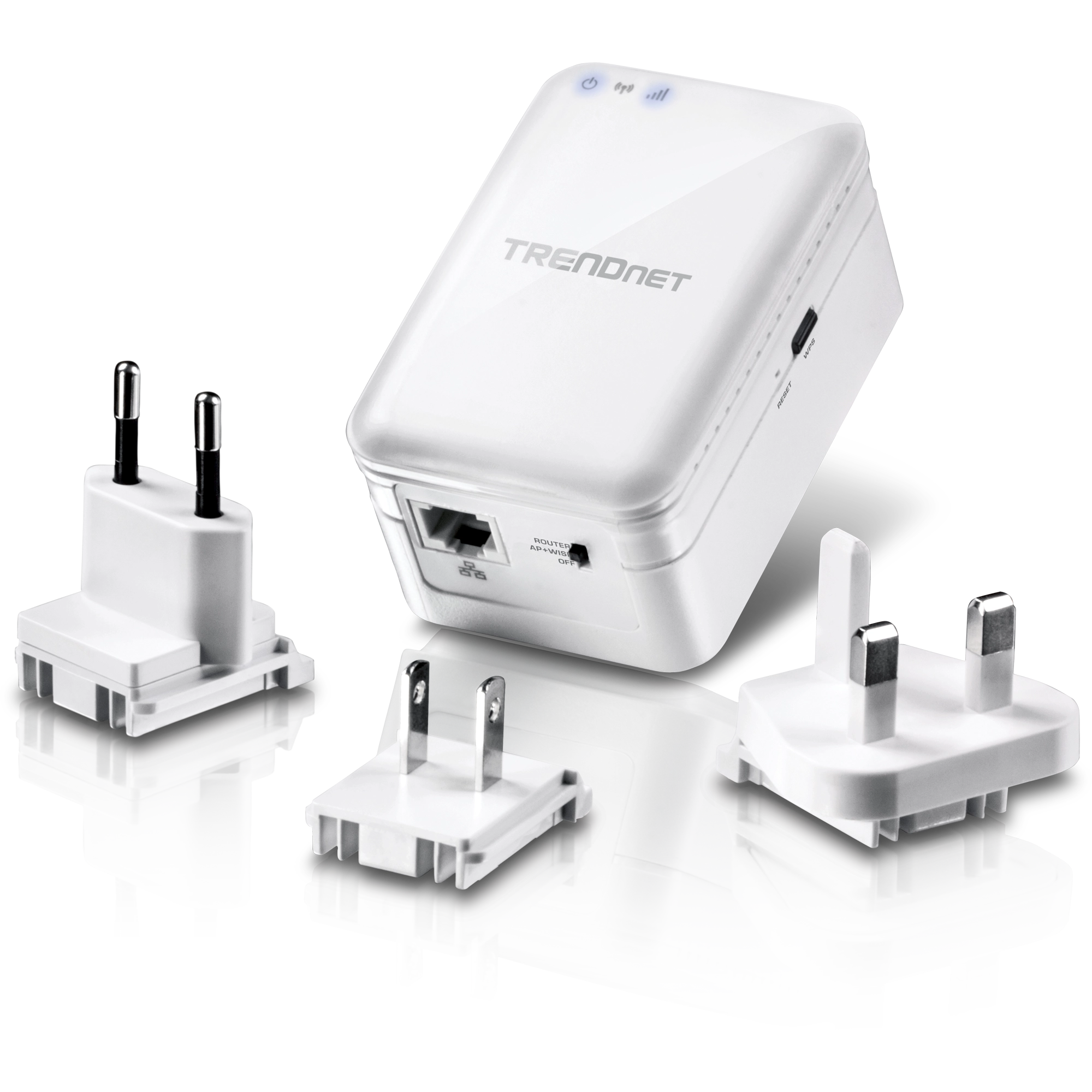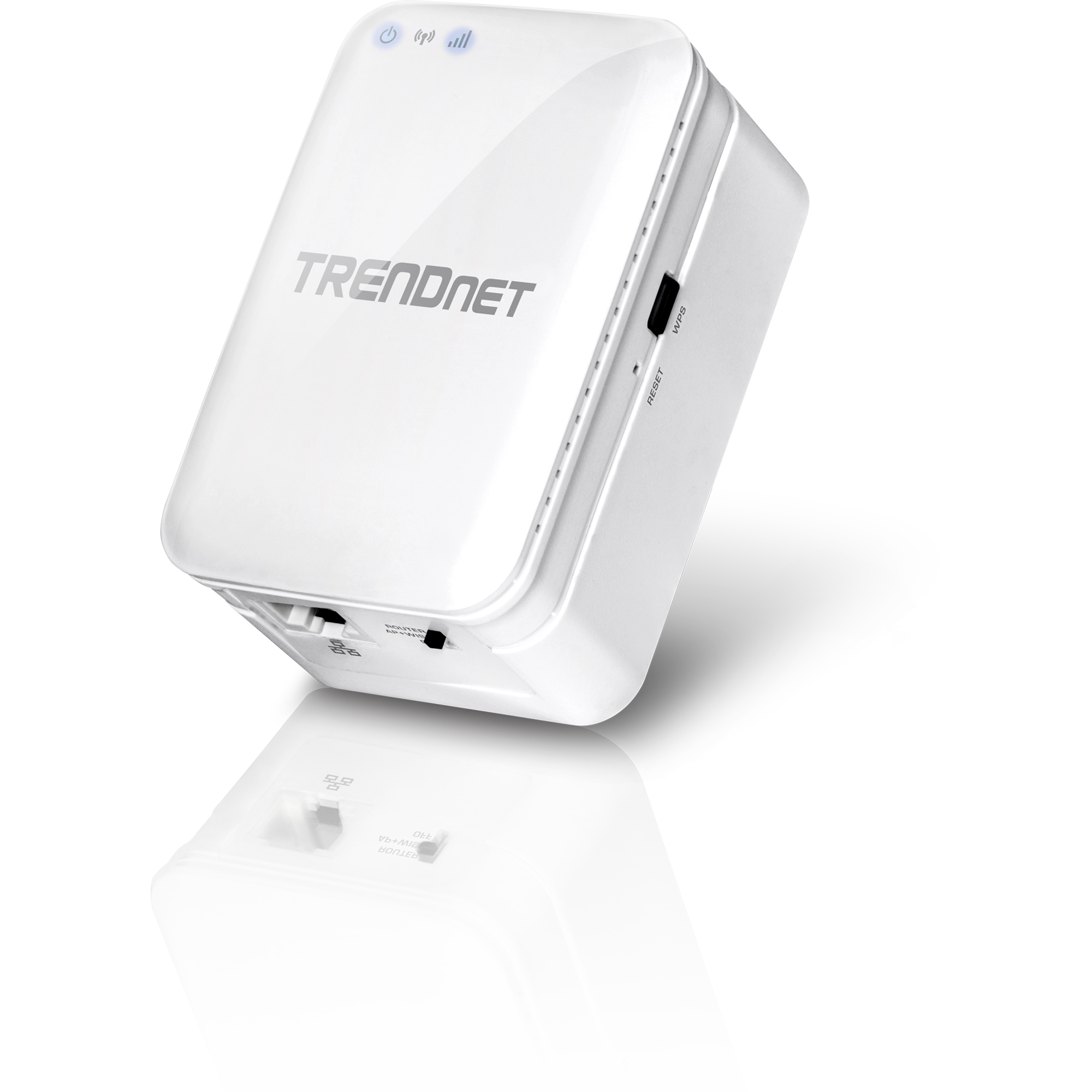AC750 Wireless Travel Router
TEW-817DTR (Version v1.0R)
- Networks WiFi AC and N devices while on the go
- AC750: 433 Mbps WiFi AC + 300 Mbps WiFi N bands
- Share a single internet connection with multiple users
- Router, Wireless ISP (WISP), Access Point, and Repeater modes
- Interchangeable power plugs: North America, Euro, and UK
- Pre-encrypted WiFi for your convenience
TRENDnet's AC750 Wireless Travel Router, model TEW- 817DTR, is a powerful travel router for on the go professionals. Concurrent high performance WiFi AC and N bands network all wireless devices. Router mode turns a wired internet connection into a wireless network. Wireless ISP (WISP) mode shares a single password protected hotel WiFi connection with multiple users*. The compact router plugs directly into an outlet and interchangeable North America, Euro, and UK power prongs work on all continents.

Internet Sharing
Router mode shares a wired connection and WISP mode shares a WiFi connection (WISP compatible) with multiple users.

WiFi for All
WiFi AC and WiFi N devices are supported by concurrent 433 Mbps WiFi AC and 300 Mbps WiFi N networks.

Travel Ready
Stay connected on all continents with easily interchangeable USA, Euro, and UK power plugs.

Easy Setup
Get up and running quickly with the intuitive guided setup
Wireless AC750
Concurrent high speed 433 Mbps WiFi AC + 300 Mbps WiFi N bands
Pre-Encrypted Wireless
For your convenience the wireless network arrives pre-encrypted with its own unique password
Router Mode
Turns a single wired internet connection into a shared wireless network
WISP Mode
Shares a single password protected hotel WiFi connection with multiple users*
Access Point / Repeater Modes
Access Point and Repeater modes add device versatility
Toggle Switch
A convenient external switch sets the TEW-817DTR to Router mode, to WISP/AP/Repeater mode, or turns it off
Power Plugs
Stay connected on all continents with interchangeable North America, Euro, and UK power plugs
Ethernet Port
- Router mode: WAN port used to connect to a wired internet connection
- WISP/AP/Repeater mode: LAN port used to connect a wired device to the internet
One Touch Connection
Connect at the touch of the Wi-Fi Protected Setup (WPS) button
Guest Network
Create an isolated network for guest internet access only (router mode only)
VPN Passthrough Support
Remote access with IPsec, PPTP, and L2TP VPN passthrough support
IPv6
IPv6 network support
| Standards |
|
|---|---|
| Hardware Interface |
|
| Modes |
|
| Features |
|
| Access Control |
|
| Quality of Service |
|
| Frequency |
|
| Modulation |
|
| Antenna Gain |
|
| Wireless Output Power / Receiving Sensitivity |
|
| Wireless Channel |
|
| Power |
|
| Operating Temperature |
|
| Operating Humidity |
|
| Certifications |
|
| Dimensions |
|
| Weight |
|
| Warranty |
|
PACKAGE CONTENTS |
|
*Maximum wireless signal rates are referenced from IEEE 802.11 theoretical specifications. Actual data throughput and cover-age will vary depending on interference, network traffic, building materials and other conditions. For maximum performance of up to 433 Mbps use with a 433 Mbps 802.11ac wireless adapter.
Top 5 Reasons to Consider an AC Router
New to Networking: Wireless AC vs. Wireless N
DIY: Setting up a Wireless AC Network
DIY: Connecting an Internet TV with Wireless
DIY: Extending Your Wireless Network
DIY: 3 Simple Steps to Improve Wireless Performance
Wireless Encryption Options




.webp)
_th.webp)

.webp)
.webp)
.webp)
.webp)
.webp)
.webp)
.webp)
.webp)
